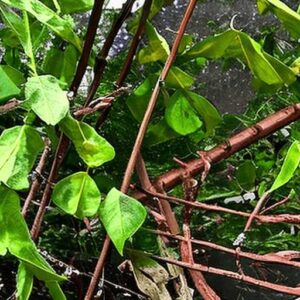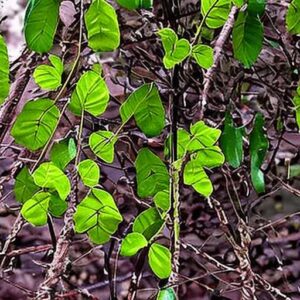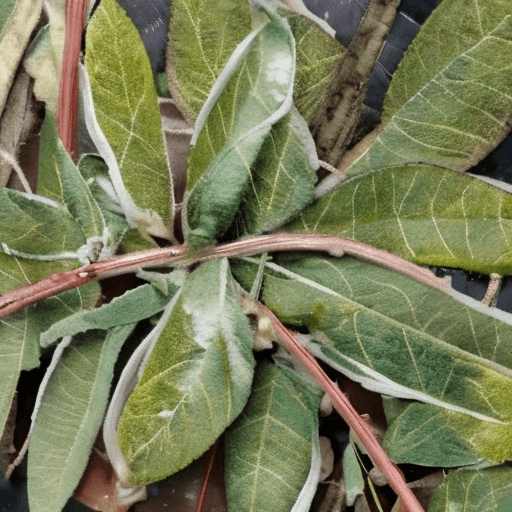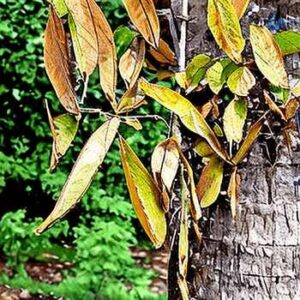If you are searching “honeysuckle problems” then before that let me tell you honeysuckle has many varieties , Some have Beautiful Fragrance that may help them attract many bees , hummingbirds, caterpillars and butterflies, Others are very good at growing in difficult conditions. Most Popular are vine based and can be trailed to climb on fences and trellis. Today let’s Talk About some of the problems faced by honeysuckle plants with that I have provided a solution for that also.
Honeysuckle Problems are due to some pest attack including aphids, Armored scales, Caterpillars. They don’t have problem with Disease but it can be affected by canker and Powdery Mildew. To Solve this you will be using pesticide or insecticidal soups to get rid of them. But mostly you need to care honeysuckle in the first place so they don’t get any disease or any pest infestation. I have provided proper solution of every problem.
According to DoItYourself.Com, honeysuckle plant life can be afflicted by diverse diseases and troubles, together with Leaf Scorch, Wood Rot, Sooty Mold, Powdery Mildew, and the presence of Hyadaphis Tataricae, which can be tricky for the plants.
According to Yardener.Com, one not unusual problem with honeysuckle flora is the improvement of swollen, discolored areas at the stems, called cankers. These cankers are commonly due to fungal or bacterial infections inside the gentle tissue simply under the bark of the plant.
Pests
Southern Living states that some pests that infect common honeysuckle include aphids, scale insects, and caterpillars, and these pests can be controlled using insecticidal soap.
Chance of honeysuckle pests is less and let me tell you our plant is growing beautifully so the damage they caused is repaired by new growth. Still If you have a big garden and there are plants that get pests quite often so it can easily travel to other plants if not fixed the problem.

Aphids
According to Southern Living, common honeysuckle is susceptible to pests such as aphids, scale insects, and caterpillars. Insecticidal soap can be effective in managing these pests.
One of the most frequently honeysuckle problem is Aphid’s, they are tiny little monsters with thin legs just like cockroaches and they are quite similar to them as well generally I have seen them in green, they will be sitting on the leaf and you won’t notice , also they are in pink, black and brown color as well.
What they do is eat the vine area or leafy part , they suck the liquid which we call sap it found on every tree and plant. After their infestation, leaves shrink , wilted , become yellow and stem may die making the growth resisted on that branch.
Overall plants will see flowers a lot less and growth reduced. Always try to check the leaves section and find if there’s an infestation. If there are small groups of pests then spraying water 3 times a day will solve the problem, else you need insecticidal soap that can be used every 3 days till they vanish. If that’s not solve the problem , using pyrethrum spray will get rid of these pests.
Also Aphids are not going to suck the woody stem which builds on winters, but will attack on new growth that’s coming in every spring.

Armored scales
Scales is another honeysuckle disease, they are ugly looking pests generally in brown, yellow, dark black color. They look like tiny tortoises having stripes on the body. They will come at honeysuckle but can’t damage much of the things there so don’t worry.
Solution : You can use insecticide or pesticide for Aphids and scale problems.
Here is my suggested Pesticide:
Caterpillars are heavy eaters, they come from the leaf section and eat it. What good thing about them is you can easily get rid of them by taking them out of the plant or using molasses(1 spoon) or garlic crushed(3) , soap and water and spray on the plant.
Diseases

Some honeysuckle diseases are Leaf blight, Canker and powdery mildew are some of the diseases that can happen to honeysuckle vine or its variety. Let me explain each of them one by one to make you better understand the problems.
Canker
According to ucanr ipm, honeysuckle can be afflicted by canker illnesses including Hypoxylon canker and stem cankers main to dieback. Additionally, powdery mould is a not unusual issue for honeysuckle plant life.
One such honeysuckle problem which is caused by bacteria or fungus that breaks the tissue inside the woody part of the stem or generally happen on the stem. You may encounter stems getting discolored or some portion of shoot is broke the outer layer and you may have seen these generally big trees when they are old gets have marks. The inside tissue would be easily seen , this happens for various reasons one is it gets hit by something so form a wound, sometimes containered tools are used or rain water which makes the environment for fungus to grow. Solution is simple just cut the part or few inches to get rid of canker. If the whole plant is getting these then remove the whole its full infected. Always use sterilized pruning shears and clean the garden often so any disease can’t be grown.
Powdery Mildew
Melinda Myers, in her article “Honeysuckle Woes,” notes that powdery mold is the maximum regular disorder affecting honeysuckle. To limit this hassle, it is encouraged to develop honeysuckle in complete solar and practice proper pruning techniques.
It is also happened because of fungus infection and it spreads white power on leaves and other part of the plant, honeysuckle leaves can get damaged , vine that are close to each other it get transferred easily. Leaves may shrink , discolored and then drop. This problem may develop because in humid, dry or warm weather. The solution would be to use a Fungicide for that & have a solution of sulfur spray once every week or 2 till you see the plant getting better and no powdery mildew sign.
Here is the Fungicide I Would Recommend to You.
Honeysuckle Leaf Blight: Causes, Symptoms, and Management
Understanding Honeysuckle Leaf Blight
According to CT.Gov, a few diseases due to fungi that have an effect on honeysuckle encompass leaf blight and Herpobasidium. These illnesses lead to deformed, thickened, and curled leaves, frequently covered in a whitish bloom. They are more likely to occur in moist conditions.
Symptoms of Honeysuckle Leaf Blight:
- Leaf Deformation: Infected leaves often exhibit curling and thickening, resulting in distorted foliage with abnormal growth patterns.
- Discoloration: Blighted honeysuckle leaves may show yellowing or browning along the veins and leaf tissues near the veins. The discoloration can spread, affecting larger areas of the leaf surface.
- Premature Leaf Drop: As the infection progresses, severely affected leaves may turn brown or black and fall prematurely from the plant, diminishing the overall aesthetic appeal of honeysuckle shrubs or vines.
- Whitish Bloom: Some infected leaves may develop a powdery whitish bloom, giving them a characteristic powdery appearance associated with fungal growth.
Management Strategies for Honeysuckle Leaf Blight:
While complete eradication of honeysuckle leaf blight may not always be possible, there are several management practices that can help control its impact and prevent further spread. Consider the following strategies:
- Sanitation: Promptly remove infected leaves when blight symptoms are observed to reduce the chances of disease spread. Properly dispose of the affected foliage.
- Pruning: Regularly inspect honeysuckle plants and promptly prune out dead or diseased branches. This practice improves air circulation and decreases the risk of fungal infections.
- Proper Watering: Avoid overhead watering and instead water the plants at the base to keep the leaves dry. Moisture on the foliage promotes the growth and spread of fungal pathogens.
- Fungicide Applications: In severe cases where honeysuckle leaf blight persists, the use of fungicides may be necessary. Consult with a local gardening expert or extension service to identify suitable fungicides and carefully follow the provided instructions.
- Plant Selection: When selecting honeysuckle varieties for your garden or landscape, consider disease-resistant cultivars. These cultivars have been specifically bred to withstand common fungal infections and may be less susceptible to honeysuckle leaf blight.
Climate/ Soil Based Problems
Another Honeysuckle problem occur due to poor soil and get affected or even if they were put in bad light condition where its too much dark, this is highly disked by them. Some varieties like to be in Warm , hot climates and others just enjoy the partial shade , some get leaf burn because of heavy sunlight. They can also develop leggy condition that leads to no flowering if you put them in shade and not in sunlight. Soil should have neutral pH and not be high in acidic as they may undergo nutrient deficiency which leads to yellow leaves or get pale , having hard time to grow. You should have a combination of fertile and well drainage soil and not just clay soil otherwise it will be a new problem which is rotting.
Honeysuckle Vine – Care, Propagation, Pruning, Sale (Growing Guide)
Most Searched Questions:
Why is my honeysuckle dying

Root Rot can happen in honeysuckle and it may end up dying if poured too much water which directly impact the growth and you may see leaves drop or small size leaf. Yellowing of leaves is connected with iron or nitrogen deficiency; these are nutrients if the plant didn’t result in leaf wilt and drop. Insecticide can also affect this plant as it is termed as invasive.
Honeysuckle leaf problems
Honeysuckle leaf gets 2-3 problems like yellowing which is because of nutrients deficiency. Another issue is leaf blight problems that can happen because of fungal infections and the solution to that is using fungicide. First yellow then brown leaf appears, You may notice some portion of leaf gets covered with that then it takes the entire leaf. The leaf looks dried and brown with no life.
Honeysuckle leaf blight treatment
Treatment is to avoid leaf light problems by not watering too much and also remove all leaves that have fungal infection and don’t make them drop on soil. Honeysuckle leaf blight problem can solved by fungicide that is effective and check holes of pot. Take a look at soil if it is well drained , it should have air circulation for roots.
Honeysuckle flower problems
I have explained all the problems of honeysuckle including powdery mildew , cankers, leaf yellowing, fungal infection, nutritional deficiency, other pests, overwatering, underwatering, winter dormancy , fungicide and pesticide, avoiding insecticide, pruning that can solve many problems.
Honeysuckle gone woody
What happens is the honeysuckle is a warm season grower and likes to grow in spring or summer. In winter they become dormant and its stem becomes woody which means it gets hard , that stem will not grow anymore but its width will increase with time until the plant has life ,but can’t grow in length again.Plant will grow and thrive so it didn’t affect the overall plant so don’t worry.
Honeysuckle problems no flowers
First make sure you are giving it water and keeping it moist, roots need it. Give Shade to Root base and Sun to Stem part, If The Flower didn’t come in spring lightly prune it and do the same next year. Check aphids and fungal infections and get rid of them using fungicide and pesticide.
Read :
Are Honeysuckle Berries Edible? (Types, Easy to Identify)
Types / Variety of Honeysuckle – blooms of flowers
Is honeysuckle poisonous to dogs?
Honeysuckle Vine – Care, Propagation, Pruning, Sale (Growing Guide)
Reference:
https://bygl.osu.edu/node/1098
https://plantdiseasehandbook.tamu.edu/landscaping/ground-covers/honeysuckle/
